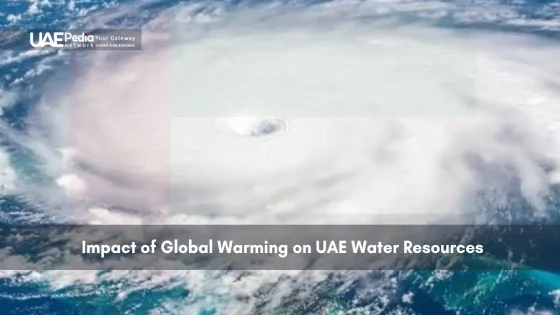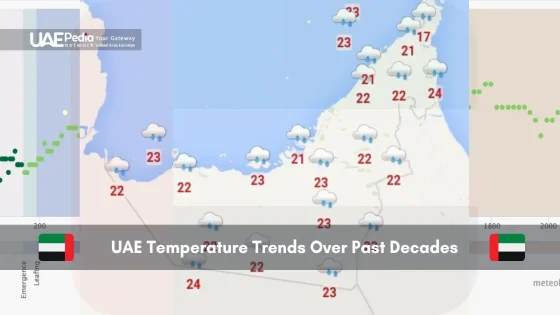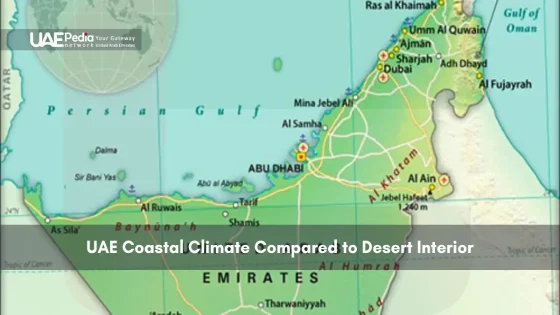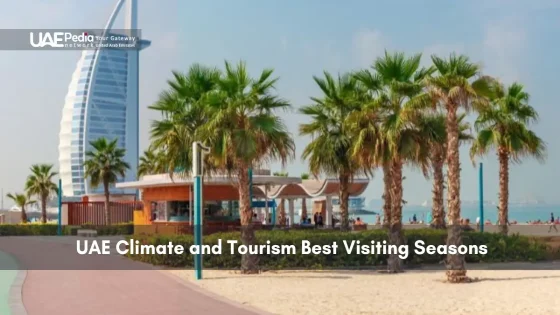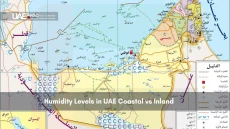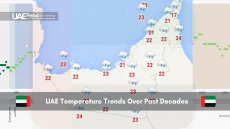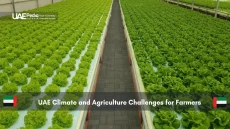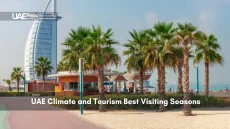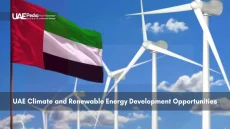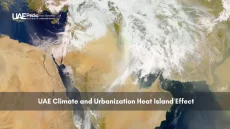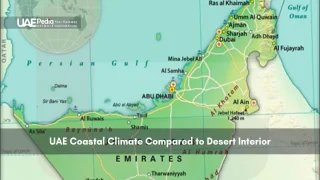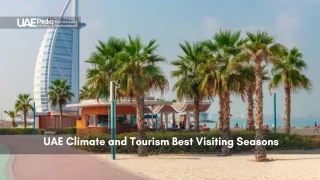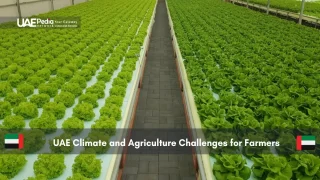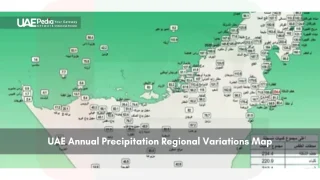Picture a nation where 42% of drinking water comes from the sea—a reality for the United Arab Emirates, where desalination plants hum day and night. But here’s the twist: rising temperatures are making this lifeline both essential and environmentally costly. As weather patterns shift, the Emirates face a double challenge: securing water for cities while cutting emissions from energy-intensive production.
The Ministry of Climate Change and Environment isn’t sitting idle. Updated greenhouse gas targets and a push toward renewable energy reveal a country racing to future-proof its natural resources. Did you know the UAE Vision 2021 plan already boosted solar-powered desalination by 27% since 2017? That’s the Emirates balancing oil legacy with green ambition.
Sea levels creeping toward coastal cities. Droughts testing desert agriculture. This isn’t doomscrolling—it’s today’s climate reality in a region warming twice as fast as the global average. Yet between mega-projects like the Mohammed bin Rashid Solar Park and global partnerships like the CCAC coalition, there’s a story here of sandstorms and solar panels.
- Desalination meets 42% of UAE’s water needs but drives energy demands
- Government targets 50% clean energy in power mix by 2050
- Climate pressures threaten both economy and cultural traditions
Understanding Climate Change in the UAE
Imagine stepping outside in Abu Dhabi during July—the air feels like a hairdryer set to “high,” with thermometers hitting 122°F (50°C) more often than a decade ago. This isn’t just a bad summer; it’s the new normal in a country where temperatures rise 0.6°F every decade—twice the global average. Farmers in Al Ain now water date palms at dawn to beat evaporation, while construction crews pause midday to avoid heatstroke risks.
Climate Trends and Rising Temperatures
The Emirates’ weather report reads like a thriller: 50% less rainfall since 2002, dust storms doubling in frequency, and aquifers shrinking faster than Dubai’s rush-hour traffic. A 2023 study found groundwater levels dropped 12% in Abu Dhabi’s Al Dhafra region alone—enough to fill 1.2 million Olympic pools. “We’re not just fighting heat,” says Her Excellency Mariam bint Mohammed Almheiri at COP28. “We’re racing to rebalance nature and progress.”
Regional Vulnerabilities and Drought Patterns
Desert winds don’t play favorites. Sharjah’s wadis sit bone-dry for months, while Ras Al Khaimah’s mountain villages watch fog—their traditional water source—vanish like mirages. Three factors intensify the squeeze:
- Sandstorms: 62 major events in 2023, up from 40 in 2010, clogging desalination filters
- Soil salinity: 35% of agricultural land now too salty for crops
- Coastal erosion: 4.7 miles of shoreline lost yearly to rising seas
Yet amid the dust, there’s determination. The Mohammed bin Rashid Solar Park hums louder each year, and nuclear power plants promise cleaner energy. As the Middle East warms, the UAE’s story becomes a lesson in grit—and adaptation.
The Impact of Global Warming on UAE
You know that moment when your water bottle sweats in the midday heat? Now imagine that happening across an entire nation. Rising mercury levels aren’t just making air conditioners work overtime—they’re altering the very chemistry of water sources. A 2023 government report shows groundwater salinity spiked 18% in agricultural areas since 2015, turning life-giving wells into briny challenges.
Heat, Thirst, and the Carbon Connection
Here’s how it works: fossil fuel emissions trap heat, which evaporates freshwater reserves faster than nature replenishes them. The UAE’s average temperature climbed 2.3°F since 2000—double the global rate. “We’re seeing rainfall patterns shift from rare to erratic,” notes Dr. Aisha Al Abdooli from the Ministry of Climate Change. Her team’s data reveals 40% less mountain fog capture in Ras Al Khaimah, a traditional water source for highland farms.
| Year | Avg Summer Temp (°F) | Groundwater Level Drop (ft) | Desalination Cost Increase |
|---|---|---|---|
| 2010 | 104.5 | 12 | +7% |
| 2020 | 108.9 | 29 | +19% |
| 2030 (projected) | 113.2 | 47 | +34% |
This thermal squeeze creates a domino effect. Warmer seas force desalination plants to consume 22% more energy to filter saltwater, per the Abu Dhabi Environment Agency. Meanwhile, sandstorms—up 55% since 2010—clog filtration systems like espresso grounds in a drip machine. The result? Water bills that could make your eyes water.
But here’s the twist: the Emirates are countering with solar-powered desalination and SLCP (short-lived climate pollutant) cuts. A new carbon trading market launched in Dubai aims to slash emissions from oil and gas operations by 23% by 2030. It’s not just about survival—it’s about rewriting the rules of desert living.
Challenges to Water Resources and Infrastructure
Think of UAE’s water system as a phone perpetually stuck at 15%—constantly charging (via desalination) while apps (urban growth) drain it faster. This balancing act faces new pressures as climate shifts crank up the heat on aging pipes and treatment plants.
Saltwater Solutions Come With Sticker Shock
Desalination isn’t just energy-hungry—it’s getting pricier as seawater warms. A 2024 report shows each cubic meter of freshwater now costs 31% more to produce than in 2015. Here’s why:
| Year | Energy Used per Liter | Brine Output | Operating Cost |
|---|---|---|---|
| 2015 | 3.8 kWh | 1.5x seawater | $0.78/m³ |
| 2024 | 5.1 kWh | 2.3x seawater | $1.02/m³ |
“We’re essentially trading carbon emissions for drinking glasses,” notes a Dubai Utilities manager who asked to remain anonymous. Warmer Gulf waters force plants to work harder—consuming enough natural gas daily to power 680,000 homes.
Concrete Jungles Test Century-Old Pipes
Abu Dhabi’s population boom—42% since 2010—strains infrastructure built for quieter times. Last year’s record rainfall exposed vulnerabilities:
- 87 emergency flood pumps activated in Dubai
- 12 neighborhoods experienced 48-hour water outages
- Pipe leaks wasted 220 million gallons—enough for 3.4 million showers
Yet between cloud seeding trials and AI-powered leak detectors, the Emirates are rewriting the playbook. Next stop? Solar-powered desalination hubs that could cut energy consumption by half—if the math holds.
Innovative Adaptation Strategies for Water Scarcity
What if your neighborhood park doubled as a water-saving lab? In Sharjah, that’s exactly what’s happening. Communities across the United Arab Emirates are blending tradition with tech to tackle scarcity—one rooftop garden and AI-powered irrigation system at a time.
Community and Government Initiatives
Take Al Ain’s school gardens project. Students grow drought-resistant crops using ancient falaj channels redesigned with smart sensors. “We’re teaching kids that every drop has a story,” says project lead Fatima Al-Mansoori. Results? 38% less water use than conventional farms.
The Ministry of Climate Change isn’t just watching—it’s amplifying these efforts. Their 2023 report highlights three game-changers:
- Solar-powered mosques: 200+ houses of worship now recycle ablution water for landscaping
- Fog-harvesting nets in Hatta: Capture 150 liters daily—enough for 20 families
- Tax breaks for hotels cutting pool consumption by 25%
Sheikh Mohammed bin Rashid’s latest move? A $1.3 billion fund for grassroots projects. “True sustainability starts in our backyards,” he declared at the 2023 climate change conference. The proof? Over 47 community-led renewable energy installations went live last year.
Global partnerships add muscle. Through the Middle East Green Initiative, the Arab Emirates shares smart-grid tech with Jordan and Egypt. It’s a ripple effect—every saved watt here helps protect natural resources there.
Your morning coffee could join the fight. Cafés in Dubai now offer discounts for reusable cups, saving 12 million liters annually. Small action, big splash.
Technological Advances in Desalination and Water Management
Ever wonder how a coffee filter could inspire a water revolution? The UAE’s latest desalination tech works like your morning brew—but instead of caffeine, it extracts freshwater using 60% less energy. These innovations couldn’t come sooner, as the Arab Emirates juggle growing cities with shrinking resources.
Next-Generation Desalination Technologies
Gone are the days of energy-guzzling plants. The new kid on the block? Graphene oxide membranes that separate salt from seawater like molecular sieves. A 2024 pilot in Fujairah slashed energy consumption by 43% compared to traditional reverse osmosis. “It’s like upgrading from dial-up to fiber-optic for water production,” says Dr. Hamad Al Kaabi, lead researcher at the Emirates Water Agency.
| Technology | Energy Use (kWh/m³) | Cost per Liter | Carbon Footprint |
|---|---|---|---|
| Traditional RO | 5.1 | $0.94 | 1.8kg CO₂ |
| Solar-MED Hybrid | 2.3 | $0.61 | 0.4kg CO₂ |
| Graphene Membranes | 1.7 | $0.49 | 0.2kg CO₂ |
Three game-changers reshaping the field:
- AI-powered brine management cuts waste by 72%
- Nuclear-powered plants now provide 33% of Abu Dhabi’s desalinated water
- Mobile floating units harvest freshwater during offshore oil operations
Efficiency Improvements in Water Recycling
Dubai’s newest skyscrapers hide a secret: their sewage treatment systems rival Swiss watches. Advanced bioreactors now reclaim 95% of wastewater for irrigation—clean enough for date palm forests. “We’ve turned ‘used’ water into liquid gold,” boasts engineer Layla Al Maktoum during a recent plant tour.
“By 2030, every drop entering our system will get reused at least twice. That’s not ambition—it’s arithmetic.”
Smart grids play matchmaker between supply and demand. Sensors in Sharjah’s pipes detect leaks faster than a WhatsApp rumor spreads, while cloud algorithms predict usage spikes before Friday mosque crowds. The result? A 31% drop in non-revenue water since 2022.
As temperatures climb, these tech leaps offer more than survival—they rewrite desert living’s rulebook. From nanobubbles that purify groundwater to solar stills that mimic cactus condensation, the United Arab Emirates proves innovation flows fastest when the well runs dry.
Renewable Energy and Climate Action Initiatives
Ever watched a desert sunrise turn sand into gold? The UAE now does this daily—harnessing sunlight to power cities and cool homes. With $17 billion invested since 2020, solar panels and nuclear reactors are rewriting the nation’s energy story.
Sun Power Meets Atomic Precision
Dubai’s Mohammed bin Rashid Solar Park stretches wider than Manhattan, while Abu Dhabi’s Barakah nuclear plant quietly supplies 25% of the emirate’s electricity. Check the stats:
| Project | Capacity | Emissions Avoided | Jobs Created |
|---|---|---|---|
| Al Dhafra Solar | 2 GW | 2.4M tons CO₂/year | 4,500 |
| Barakah Unit 4 | 5.6 GW | 21M tons CO₂/year | 12,000 |
These aren’t just megaprojects—they’re job engines. Solar technician roles grew 330% since 2021, per the Ministry of Energy’s latest report.
Global Handshakes, Cleaner Air
The Emirates co-founded the Agriculture Innovation Mission for Climate with 40+ nations, aiming to slash farm emissions by 30% before 2030. “Our partnerships prove climate action isn’t a solo sport,” says UAE Climate Envoy Majid Al Suwaidi.
- Middle East Green Initiative: Planting 100M mangroves by 2030
- Global Methane Pledge: Cutting gas leaks 45% by 2025
- Solar exports to Egypt: Powering 800K homes annually
From oil fields to innovation hubs, the United Arab Emirates shows how deserts can drive the energy transition. Next stop? Hydrogen-powered trucks rolling through the Rub’ al Khali—because here, even sandstorms spark breakthroughs.
Economic Implications of Environmental Change
Balancing a national budget where sand dunes and oil rigs both demand attention—that’s the UAE’s economic tightrope act. A 2024 report reveals environmental pressures could shave 6% off GDP by 2030 if unchecked. Yet strategic investments in green tech and infrastructure aim to turn scarcity into opportunity.
Government Investments Versus Resource Depletion
Dubai’s $2 billion push for vertical farms contrasts sharply with groundwater levels dropping 9% annually. Here’s the math: every dirham spent on desalination innovation saves three in future crisis management. The UAE Environment 2030 plan funnels 14% of federal budgets into projects like:
- Solar-powered steel plants cutting carbon emissions by 1.2 million tons yearly
- AI-driven water grids reducing urban consumption by 33%
- Mangrove restoration creating 12,000 coastal jobs
Traditional sectors face headwinds. Oil and gas production costs jumped 18% since 2020 due to harsher desert conditions. Meanwhile, tourism—contributing 16% to GDP—grapples with coral bleaching and heat-stressed visitors.
Households feel the pinch too. Water bills climbed 22% in Abu Dhabi last year, pushing families toward smart meters and greywater systems. “We’re not just adapting,” notes economist Dr. Yousuf Al Ali. “We’re building an economy where sustainability drives profit margins.”
Next up? How policy reforms and global teamwork could cement the Arab Emirates as a climate solutions hub. Spoiler: it involves solar-powered ski slopes and carbon-neutral cement.
Policy Reforms and International Cooperation
What if climate action were a global potluck dinner? The UAE’s bringing more than dates and karak chai to the table. Fresh from hosting COP28, the nation now blends homegrown green policies with cross-border teamwork—like a master chef mixing local spices with imported ingredients.
Green Economy Playbook: Targets That Stick
Sheikh Mohammed bin Rashid’s 2024 decree turbocharged the UAE’s climate game plan. Key moves:
- Carbon trading markets slashing industrial emissions 23% by 2030
- $54 billion pledged for renewable energy projects, including hydrogen hubs
- Tax breaks for companies cutting water use 30%+
The Ministry of Climate Change isn’t playing nice—new fines hit oil giants $13,000 per ton of excess CO₂. Result? ADNOC cut methane leaks 45% since 2022. “Compliance isn’t optional,” states their latest report. “It’s survival math.”
Diplomacy in Desert Boots
While ratifying the Paris Agreement was step one, the United Arab Emirates now leads regional pacts. Take the Middle East Green Initiative—planting 100 million mangroves by 2030 with 12 neighbor nations. Or the $4 billion Africa Clean Energy Corridor, wiring solar farms from Senegal to Somalia.
“Climate change ignores borders. So must our solutions.”
Domestic laws now mirror global promises. The 2023 Net Zero by 2050 law binds all seven emirates, while green building codes trim AC energy use by 38%. But here’s the kicker: these policies created 135,000 jobs last year—proving eco-action fuels economy engines.
This policy groundwork sets the stage for every resident to contribute—from CEOs to schoolkids. Because in the Arab Emirates, saving the planet isn’t a solo sport. It’s a team effort with VIP tickets for all.
Engaging Public Awareness and Sustainable Practices
What if your child’s science fair project could help cool the planet? In the United Arab Emirates, students aren’t just learning about climate change—they’re prototyping solutions. Schools now blend traditional lessons with rooftop gardens and AI-powered recycling contests, creating a generation ready to tackle environmental challenges head-on.
Classrooms as Climate Labs
The ‘Our Generation’ initiative transformed 127 schools into eco-hubs last year. Kids in Sharjah monitor solar panel outputs, while Dubai teens compete in carbon-capture hackathons. “We’re building problem-solvers, not just test-takers,” says educator Khalid Al-Mansoori. Results speak loud:
| Emirate | Eco-Projects Launched (2023) | Student Participation | Energy Savings |
|---|---|---|---|
| Abu Dhabi | 89 | 14,200 | 18% |
| Dubai | 67 | 9,800 | 23% |
| Ras Al Khaimah | 42 | 5,600 | 12% |
These programs do more than teach—they transform behavior. Families using the Energy Diet app (developed by Ajman students) cut household emissions by 31% on average. Even mosques join in, with 300+ using youth-designed water-saving wudu stations.
Community events spark wider change. At the annual Climate Action Expo, families test-drive electric buggies and trade plastic for reusable bottles. “We made recycling competitive,” laughs participant Aisha Al-Hammadi, whose neighborhood recycled 4 tons of waste last Ramadan.
This groundswell complements national policies. The Arab Emirates‘ 2024 report shows public engagement boosted renewable energy adoption by 19% since 2022. As desert winds shift, so do mindsets—proving that lasting change starts with curious kids and their solar-powered science kits.
Looking Ahead: Shaping a Resilient Future for UAE
Charting a course through shifting sands takes equal parts grit and vision. The United Arab Emirates now faces its ultimate navigation test—balancing rapid growth with climate change realities. Think graphene membranes filtering seawater beside mangrove nurseries. Or nuclear reactors humming alongside AI-powered leak detectors. This isn’t sci-fi—it’s tomorrow’s toolkit.
Three anchors will steady the ship:
- Solar farms expanding faster than Dubai’s skyline, targeting 50% clean energy by 2050
- Community-led projects like Sharjah’s fog harvesters cutting water imports 18%
- Global cooperation through initiatives like the Middle East Green Accord
Yes, challenges loom. Sea levels could reclaim 200 miles of coastline by 2100. But here’s the twist: the Mohammed bin Rashid Solar Park now powers 320,000 homes—and desalination plants. Meanwhile, Barakah’s nuclear power units slash carbon emissions equal to removing 3.2 million cars.
The roadmap? Keep citizens central. Schools teaching hydroponics. Taxis going electric. Your morning karak chai might soon come in compostable cups. As H.E. Almheiri noted at COP28: “Our deserts birthed skyscrapers. Now they’ll forge sustainability blueprints.”
So what’s your role? Track water bills. Join beach cleanups. Share that viral reel on solar-powered mosques. Because in the Arab Emirates, every drop—and every click—counts.
Rising temperatures amplify heatwaves and reduce rainfall, while warmer Gulf waters intensify humidity and coastal flooding. The National Centre of Meteorology reports summer peaks now exceed 50°C in desert areas, stressing ecosystems and water systems.
Desalination provides 90% of drinking water but relies heavily on fossil fuels. Rising sea temperatures and salinity from brine discharge threaten plant efficiency, pushing the UAE to pioneer solar-powered desalination projects like those in Al Taweelah.
Programs like the Ministry of Climate Change’s “Waterwise” campaign promote drip irrigation and greywater reuse. Schools and mosques host workshops on reducing household consumption, while farms trial AI-powered sensors to optimize groundwater use.
ADNOC’s billion decarbonization plan pairs continued oil exports with carbon capture projects and hydrogen hubs. Simultaneously, Dubai’s Mohammed bin Rashid Solar Park and Barakah Nuclear Plant aim to supply 14 GW of clean energy by 2030.
Hosting COP28 solidified its bridge-building role—advocating for oil-producing nations while pledging 40% emissions cuts by 2030. The UAE also funds solar farms in 40+ nations through Masdar’s billion clean energy portfolio.
Yes! Dubai’s “Cool Streets” initiative plants native trees, uses reflective pavement coatings, and mandates green building codes. The Sustainable City development proves car-free zones and rooftop solar can lower ambient temperatures by 5°C.
Programs like Abu Dhabi’s Eco-Schools engage 150,000 students in sustainability projects. The Climate Innovators Fellowship mentors Emirati entrepreneurs developing solutions like fog-harvesting tech and salt-tolerant crops for hyper-arid farms.
